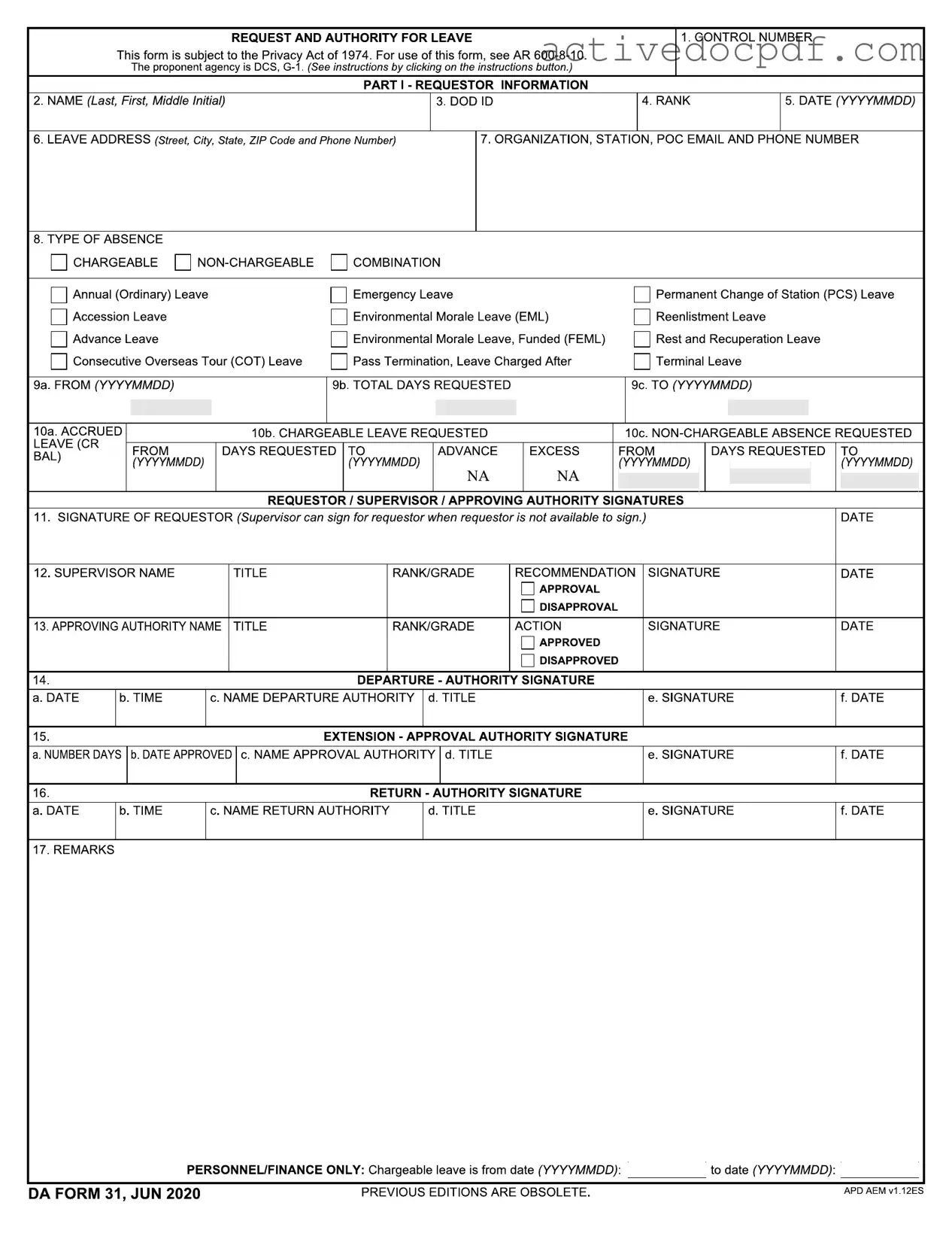Free Da 31 PDF Form
The DA 31 form is a document used by military personnel to request and authorize leave. This form, governed by the Privacy Act of 1974, collects essential information about the requestor, including their name, rank, and type of absence. Proper completion and approval of the DA 31 are crucial for managing leave within military operations.
Edit Form Online
